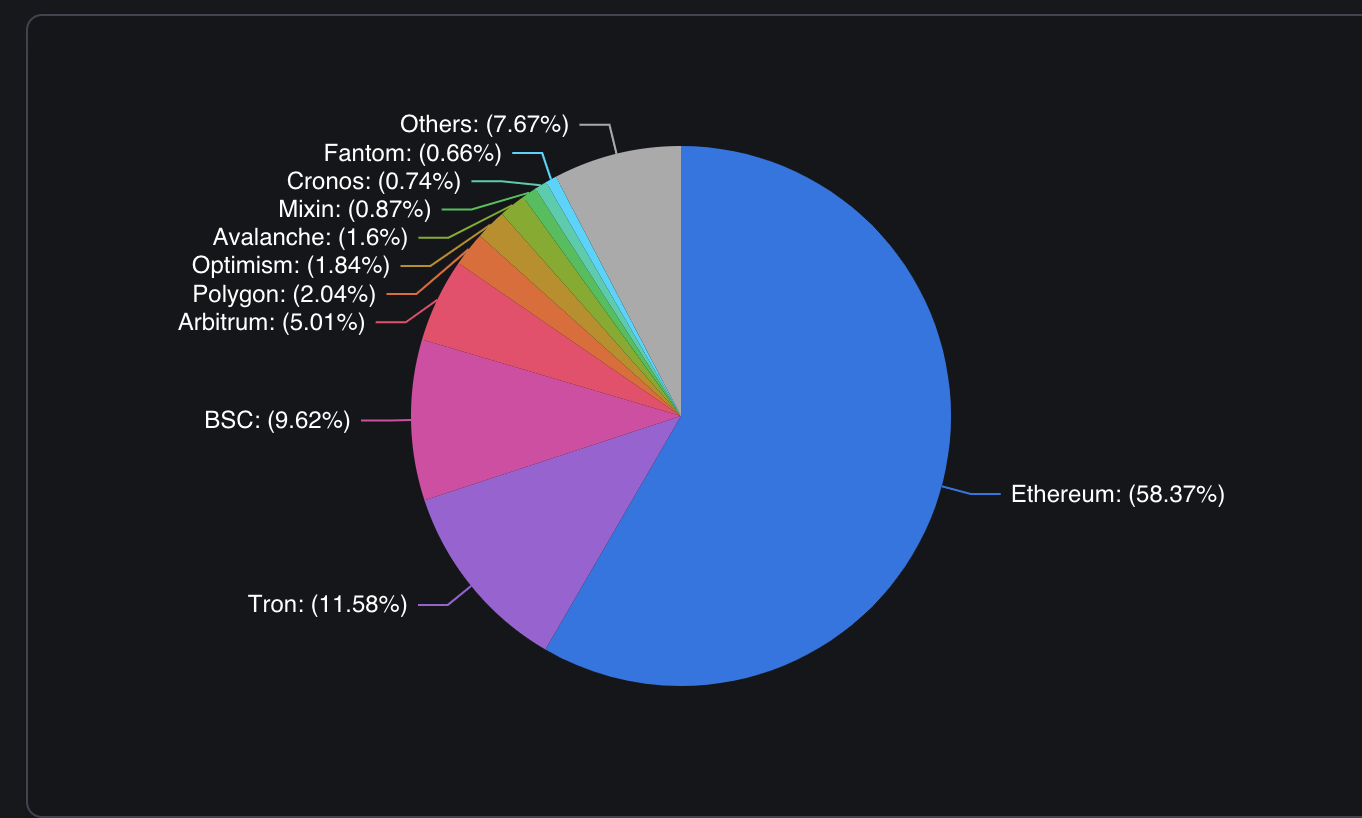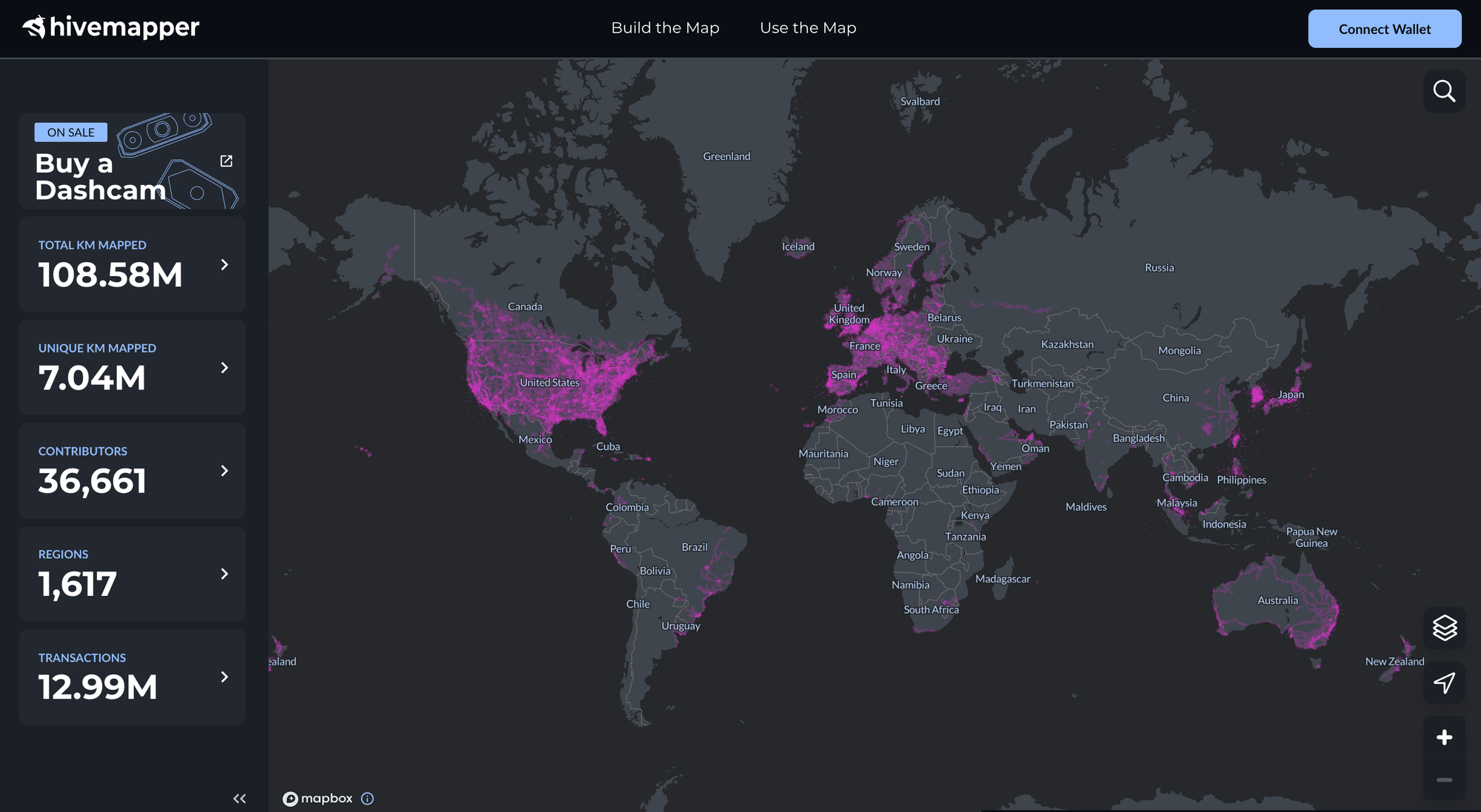Decentralized physical infrastructure | What is DePIN? The Hivemapper case study
Decentralized physical infrastructure (dePIN) is a trendy new area within the decentralization of everything space. Get a quick overview of what dePIN is and why it's important.

One interesting development in open, permissionless space is the emergence of projects that are looking to build future goods and services, but do it in ways that are more aligned with decentralized principles and ethos.
There are new veins of interest opening up looking at decentralized computing, or science, or how to build things like energy or communications projects.
DePIN is short for decentralized physical infrastructure and increasingly dePIN projects are gaining traction. The idea behind building decentralized physical infrastructure is similar to the undergirding reason and logic of building decentralized finance or defi services and products.
By leveraging programmable governance, decision-making, and coordination, people are able to build big projects (sometimes spanning the globe) without the backstop, oversight, or control of a centralized corporation or bureaucracy.
Building digital projects at scale while out from under a corporate umbrella opens up new angles and approaches for things like cost and incentives.
So why could building big decentralized projects be interesting?

Proponents that want to decentralized everything will tell you that decentralization prevents things like censorship, the ability to cut off or end important services, or mitigates the risk of too heavily relying on a single company or corporation.
A follow-on of building decentralized projects that are data intensive is that the records or the outputs will be or tamper-proof and have a higher level of integrity or at least accountability than more traditional data collection and filing systems. Also, the data is stored across distributed systems, which also adds to its integrity, but also makes systems more secure from a single-point-of-failure point of view.
Additionally, there are a number of user-centric benefits to decentralizing big projects, like physical infrastructure.
Probably the biggest reason is that these projects are open, allowing people to not only participate in how they are built, but then take the projects and further enhance or customize or make derivative goods and services.
Another big reason is decentralized projects create a different kind of economic or financial structure that can incentive people and organizations to participate. Over time, the push toward decentralized infrastructure and other forms of decentralized services will open up new ways of working and earning a living.
Let’s check out one of the leading dePIN projects right now to get a better understanding of how this could work.
What is Hivemapper and how does it work?
Hivemapper is one of the first big dePIN projects that is gaining traction, and so offers a good use case to study to try to understand how decentralized infrastructure could work at scale.

Officially launched in the end of 2022, the Hivemapper network has grown rapidly in terms of overall users, contributors, and overall coverage. As of early 2024, it looks like there are more than 36,000 network participants who have mapped over 67 million miles of roads across the planet, but particularly in United States, Canada, Western Europe, Australia, and some South America.
One the surface, Hivemapper is a new way of building a community map. The goal of the network is to generate a roapmap of the entire planet. While the output — updated roadmaps with coverage everywhere — is super interesting, the idea of a global community-created map is maybe more interesting.
An open, permissionless mapping service is like a great metaphor for how and why decentralized apps and services will flourish once the computing capabilities are robust enough to handle distributed (and secure) organization.
A world map that is completely open and can be used by other apps and services to develop innovative projects, like eco-tourism specific maps, or high resolution maps of conflict areas, or using community maps to teach is really fascinating.
And there’s a sense of fairness or even equity in terms of coverage or how things are mapped. No longer are priorities based on market values, corporate priorities, or brand building or whatever.
Instead, the community and individual contributors are able to decide and take action on which corners of the Earth and which pockets of neighborhoods need to be mapped, seen, or recognized.
What’s really interesting about Hivemapper is that network has an engaged community in terms of generating content — or actually mapping the world’s roads.
Hivemapper is built on the Solana blockchain. Participants in the network purchase a dash cam (there are specific requirements and Hivemapper sells cameras that are compatible with the network out of the box.
The next step is to create a wallet and connect the dash cam stream to the wallet. Then network contributors earn honey tokens, the native asset the the Hivemapper Network, for contributing dashcam footage of the routes they travel in their vehicle. There are different levels — or different values or payouts — for different sections of a map. More congested or heavily traveled areas that need high levels of resolution might pay more than recording streets in more remote or less trafficked areas.
The footage then becomes part of a realtime map. Using this method, Hivemapper has been able to get quick adoption and traction, and is building a global map at a scale and pace than anything that’s come before it.
One thing that’s not clear so far is what the business model is on the other side of these community-build maps. Like how does this become a sustainable business, longterm, so that the mapping can continually be updated an improved?
With Google Maps, the simple business case is that internet search can be linked up with physical locations. And then the use case or justification for advertising starts to emerge. If I’m a small business owner, I would spend money on ads that show what my business does and helps people find me or find my shop.
That same use case exists for community-built maps exists too, but when you start to take services out of a vertically integrated tech stack, like the one created by Google, the offering is different.
Maybe this leads to other kinds of apps and services that can be built on top of open maps. Just like conceptually, the success of Hivemapper and the idea that communities of people can coordinate to build something massive but in a decentralized way, creates all kinds of possibilities for future DePIN projects.
DeSci, DeSoc, and the trend to decentralized everything
The framework that there will be net benefits when things are properly decentralized extends to, well... just about everything.
In addition to coordinating and building decentralized digital infrastructure, there are moves happening in other disciplines and sectors to explore decentralized applications and uses.
For example, researchers are looking at the utility of decentralized science with the goal of better distributing the net benefits of scientific research and science funding opportunities.
Others are looking at ideas that fall under the decentralized society idea — or how can we leverage the Web3 tech to move past trying to make everything on the internet about financial exchanges or monetization. I’ll dive deeper into both of these ideas in future posts.
Likely, while noting lessons learned from the successes and failures of these decentralized projects, the move to try out new kinds of systems and organization will continue — especially as the concept of a digital lifetime becomes more normalized.